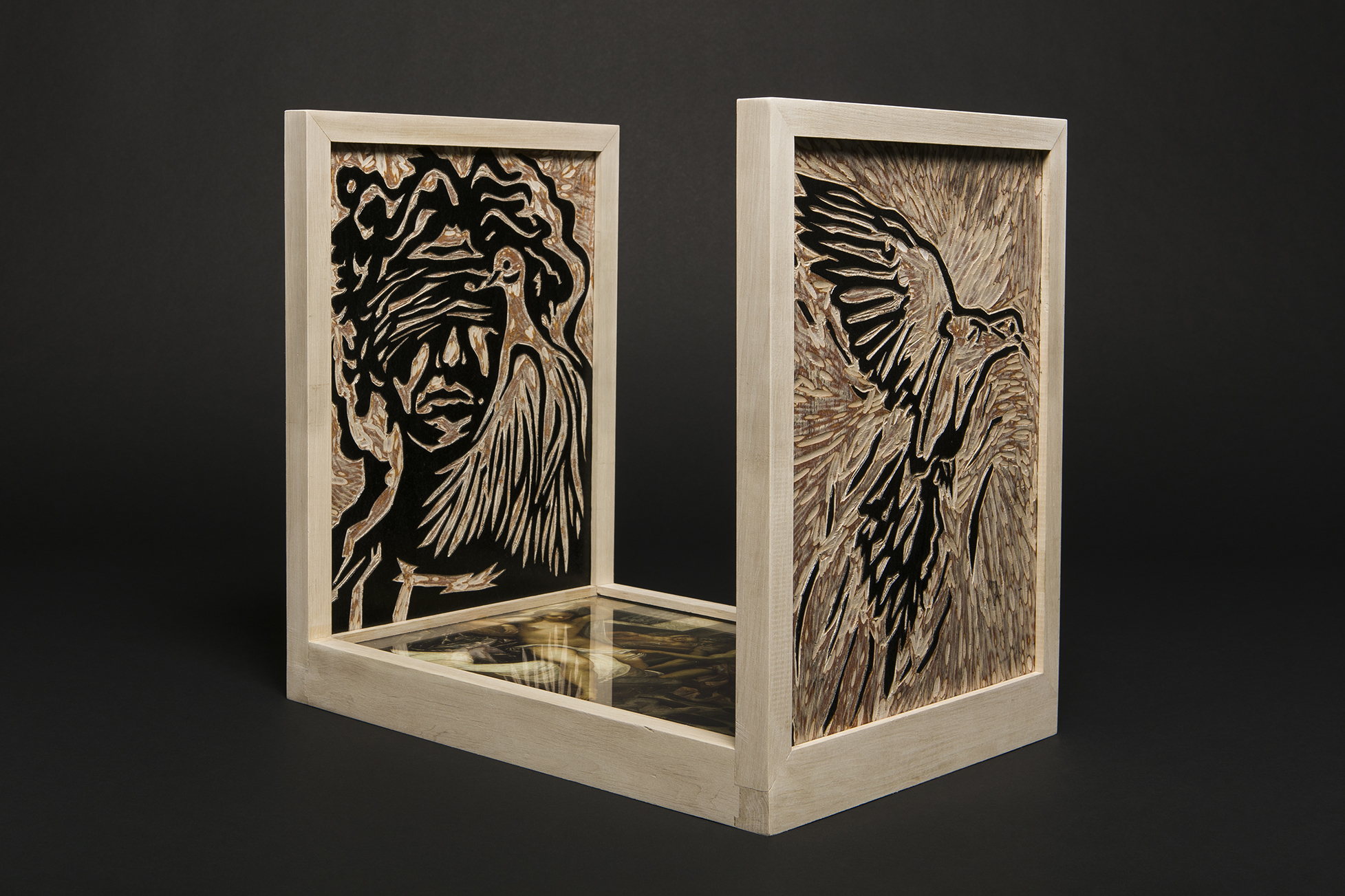THE HUMAN
SOPHISTRY

Justice as a prosthesis of domination. Open box with digital printing, hand-made carving on wood plate and black ink. 32 x 32 x 38 cm.

The human sophistry; social prosthesis and other devices address how societies develop cultural tools that play the function of prosthesis in order to embellish, hide and transform human practices that form part of core social interactions. Prostheses are artificial impersonation devices.
Each of the 7 works is the structure of an open box made with carved wooden boards and images of masterpieces from European art. Each side is a layer of information that corresponds to different meanings and symbolizes how rela¬tionships develop that conceal centre elements while prioritizing others.
Each of the works addresses the following issues:
1. Sex as prosthesis of love: Love an elaborate concept that evolves throughout the different historical periods under the common element of erotic force. 2. Language as prosthesis of space: Language comes to save the distances that separate us from others and from ourselves. It is therefore an artificial mechanism to cover distances that would not take place if there was no space to cross. 3. Seduction as prosthesis of deception: Deception is vilified; only in some societies the ones who are able to appropri¬ate something by means of a deceptive deception are applauded. Seduction is the poetic way of covering up deception in order to deceive. May it be by ways of fictional production or oral narratives? Religious, social and military rituals all make use of some form of seduction whose bottom line is more and more often proved to be deceptive. Therefore seduction, as prosthesis lives up to its nature.
4. Justice as prosthesis of domination: Justice is one of the most complex concepts that social humans have developed. But the sheer notion of justice carries within a concept of unquestionable compliance which is another reading of some form of domination conflicting with submission. 5. Religion as prosthesis of death: Every religion by developing a narrative that transcends biological existence represents a sublimated version of material death. 6. Culture as prosthesis of war: Culture in an extended form rationalized violent clashes between societies. As an extension of such confrontations, culture is an environment where differenc¬es within and itergroupal can either dissolve or radicalize. Hence, culture can be viewed as a low intensity form of continuous war that allows progress. 7. Art as prosthesis of exclusion: Social stratification traditionally produces groups that call themselves holders of certain knowledge and/or capacities, be it the intellectual elite, the religious elite, the military elite or the one more natural of all, the aristocracy. Such groups develop restrictive practices at several levels that are used to preserve privilege and excerpt influence and or power. In doing so, it naturally raises a selective practice that implies and conceals a form of social exclusion.
Autora
Clara Carvajal
Fecha
2020

Testimonios
We provide digital experience services to startups and small businesses. We help our clients succeed by creating branad identities, digital experiences, and print materials. Install any demo, plugin or template in a matter of seconds.
We provide digital experience services to startups and small businesses. We help our clients succeed by creating brand identities, digital experiences, and print materials. Install any demo, plugin or template in a matter of seconds.
We provide digital experience services to startups and small businesses. We help our clients succeed by creating brand identities, digital experiences, and print materials. Install any demo, plugin or template in a matter of seconds.
Share on












































